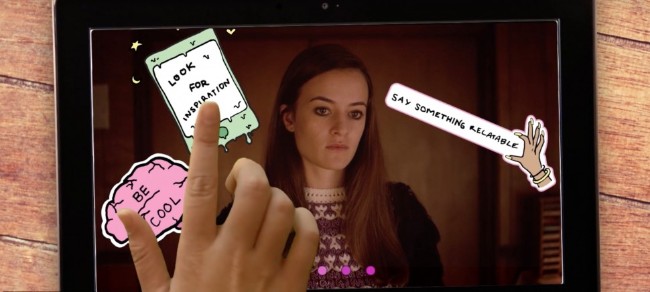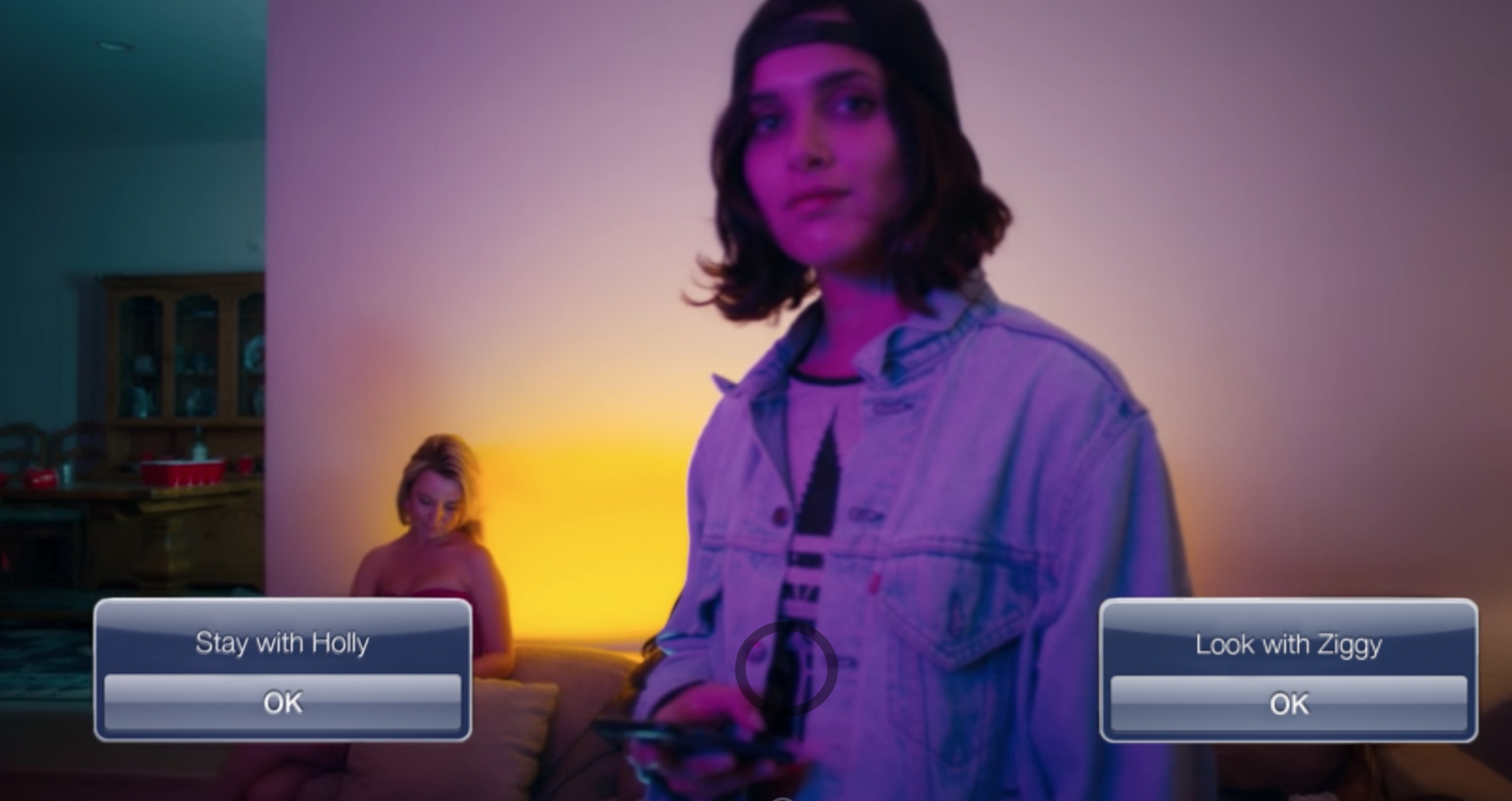
You’re watching a mystery show. It stars a woman trying to find her best friend, who’s been missing for 24 hours, by meeting the friend’s recent Tinder matches. Suddenly, on screen, our makeshift detective uncovers evidence that the perfectly charming man she’s on a date with may have also murdered her best friend…maybe. And this is when you might yell one of two things at the screen: “Stay and investigate but TELL SOMEONE WHERE YOU ARE, DUMMY!” or alternately, “Get out! Get out RIGHT. NOW.”
Usually, we can yell at a show or movie all we want with absolutely no say in what our heroine does. But in this case, at the pivotal moment, a choice appears on the screen. Click “escape” and the story seamlessly shifts toward your whims. The other path is forgotten, a separate timeline to be explored another day.
That’s the novel “Choose your own adventure” premise of Eko — a platform which gives you, the viewer, a chance to be immersed in an interactive story. The choices you can make range. Sometimes they’re big like “run away” or “stay.” Other times, you’re making smaller but more emotionally satisfying choices. Like saying something mature during a breakup or opting to be snarky. Regardless, you’ve made a decision that’s shifted the narrative, often in unexpected ways.
When musician Yoni Bloch first created Eko, it was because he wanted to make a music video that more accurately reflected the varying and complex emotional responses people have when they hear songs. Rather than a static video interpretation, he hoped to offer fans the chance to have as widely divergent experiences while watching as they had while listening.
“The band wanted to create a music video that fans could actively explore, that would evolve depending on the person watching it,” Eko’s Chief Creative Officer, Alon Benari, explains. “The tech we needed to do that didn’t exist at the time, so we created it ourselves.”
Creating this technology sent Bloch on a seven-year journey, searching for increasingly immersive ways to delight viewers with interactive experiences. Today, Eko and Warner Music Group launched The Creator Incubator — the premiere of 10 pilots from emerging creators. The Duplass brothers also just signed on for a multi-series development deal, and the company recently announced a 250 million dollar joint venture with Walmart, which will support multiple programs over the next three years.
“Today, everything is customized and interactive except for video,” Benari says. “Your phone, your social media feeds, even your doorbell is hyper-personalized and responsive, to the point that hitting play and leaning back seems almost retrograde.”
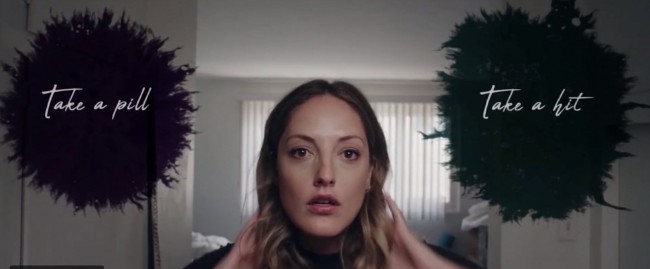
I screened a few of Eko’s newest shorts from the Creator Incubator last weekend, in advance of today’s launch. The results weren’t just innovative, they were captivating. It obviously sounds like a fun gimmick to make choices for characters, but a splashy gimmick can only take you so far. Thankfully, Eko seems as committed to attracting young artists who want to push the bounds of storytelling as they are to pushing the bounds of what’s technologically possible.
The films I watched felt relevant. They were funny, sometimes heartbreaking, and, as a millennial, deeply recognizable.
There’s no rigid way that these stories unfold or the kinds of choices you can make. Sometimes, like with the protagonist of the film Milly, the character is aware you’re pulling the strings. She literally begs you to not make her become a more aware/assertive/compassionate person at moments. “Don’t make me do this,” she says. In others, we’re simply in characters’ heads — deciding whether or not to put the phone away when an ex texts or how to respond to our mother’s nagging.
“The interactive element was such a gift in telling the story,” Michelle Markowitz, creator of the Eko short film Sidepiece, says. “I think the interactivity and choice moments reflect what happens in real life; we as humans will try a million different approaches, often even mid-conversation, until we are finally able to get whatever we most want or need in any given moment.”
It’s a tantalizing thought as a viewer — getting to try out every alternate timeline in our trickiest situations. “If I had just said this instead of crying maybe I would have gotten that raise.” Or “If I had leaned in to kiss him instead of going home, maybe my life would have turned out differently,” we think.
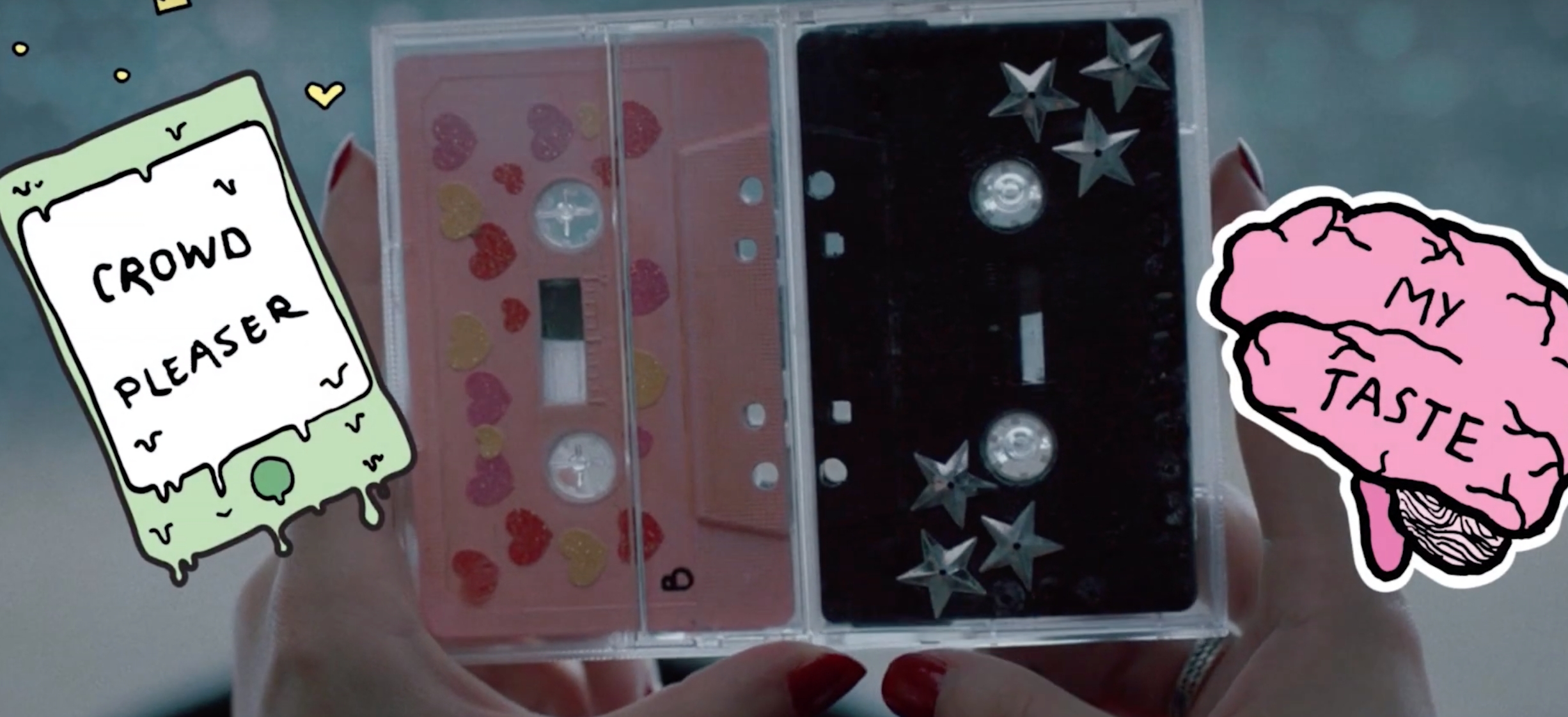
If you’re the kind of person who doubts your choices a lot in real life (as I am), you’re going to have a doozy of a time with the newly released shows. I started off constantly rewinding to change choices. Initially, that made my experience less fluid. Watching an Eko short is like a modern day Orpheus and Eurydice, with you as Orpheus. You’re very tempted to look back and see if everything is going okay, but… it’s better to just press forward, eyes ahead.
Where Eko’s Creator Incubator is truly succeeding is in touching on the insecurities and self-doubt we all face in our lives these days. Foremost among these seems to be finding a sense of connection in the modern age, a theme that all of the shorts I watched seemed to wrestle with in one way or another. In a meta-way, the platform itself actually makes you connect to the material more deeply (while portraying the difficulty of connecting). Its participatory nature forces you to stop looking at 15 different screens while watching a show in the background.
When I first put an episode on, I kept looking down at my phone, checking e-mail and scrolling Instagram. But by giving into my own scattered impulses I kept missing choices in the storyline. Then I’d have to go back. It became annoying. So I found myself giving up on answering my boss’s slack messages, and just… watching. It felt simple, lovely, and truly immersive. We so rarely get to concentrate on one thing anymore, to live fully in the moment we’re in. As I watched a heart-wrenching monologue about a woman who can’t disconnect from her phone during a bad breakup without glancing at my own phone, I connected all the more fully to the material.
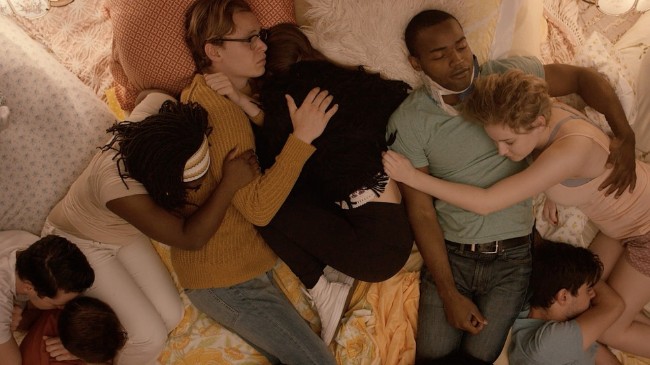
As a platform, Eko is focused on experimentation and empowering creatives. Certainly, some of the shorts worked better than others at embracing the technology in compelling ways. It’s truly a challenge to not lose oneself to the gimmick — something that will constantly evolve (just as our understanding of platforms like Twitter and Instagram has constantly evolved).
“You want to balance viewer agency with character agency,” says Jordan Fish, creator of the short What’s Good. “I think that a lot of magic can happen in the gap between how a viewer thinks they’ve set the story in motion, and how it ultimately unfolds.”
That magic is constantly unfolding for Eko and the filmmakers who use the technology. What today’s Creator Incubator launch reveals is that the stories the brand is invested in telling, the artists they want to support, and the art they’ve chosen to incorporate into their platform is worthy of our attention. In a medium that’s flooded with countless options, it also proves that adding more agency and control into the viewing experience might just be the motor that draw us back into the feeling of being truly immersed in a story.
“We’ve always believed there’s a deeper connection to stories when you have a role to play in them,” Benari says, “And the hunger for that kind of story is clearly reaching a tipping point.”
